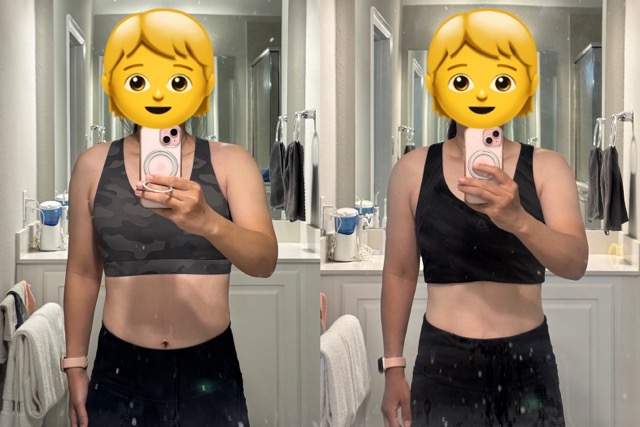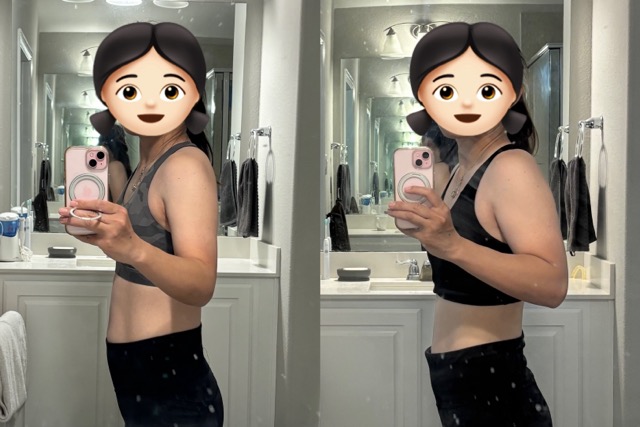Carnivore Diet Month 2: Skin, Sleep and the Big O
Posted by Mira on April 24, 2025 in stories

(This is my first monthly recap of my carnivore diet journey. From now on, I plan to document my monthly experiences and capture how I feel as accurately as possible.)
I started the carnivore diet on February 24, 2025, and it's now been two months. Below, I’ll share some noticeable improvements, experiments I’ve tried, and updates on my autoimmune conditions.
Contents
Improvements
Skin
My skin on my face and hands has become shinier and softer. During Month 1, my hands were dry, which worried me. But after consistently eating meat and a high-fat diet, my skin improved. It was a surprise when I suddenly noticed it feeling smoother and softer.
An even bigger surprise was that the skin on my son's hands also improved. He had always struggled with dry, cracked skin. We applied lotion regularly, but it never made much difference. After I started the carnivore diet, he naturally began eating what I ate — beef, eggs, and butter. One day, he told me he finally felt free, because he had never liked vegetables — it was us, his parents, who had always made him eat them.
One day, we were chatting about the benefits of the carnivore diet, and I mentioned that healthier skin could be one of them. I looked at his hands — and my jaw dropped. I had never seen his skin so smooth and shiny! He never wanted to eat vegetables in the first place, and now his skin is finally nourished by the natural fats and nutrients in animal foods.
Sleep
In Month 1, my sleep was wrecked. It had already been bad for a while, especially after I started taking high doses of vitamin D3. And when sleep is bad, I worry that my body has no way to restore itself.
It seems Month 1 was an adjustment period. By Month 2, my sleep improved significantly. Now I’m able to get deep, solid rest — the kind that leaves my whole body feeling pleasantly numb when I wake up. It’s the most refreshing sleep I’ve had in a long time.
I suspect this improvement has to do with my body finally switching to burning fat for fuel during sleep. In Month 1, it was probably still relying on glucose — but there wasn’t much available. So it kept waking me up, almost in a panic, trying to find more glucose to survive. Now that I’m fully fat-adapted, my body can rest — and truly recharge.
Orgasm
This is an intimate topic, but I think it’s important to share. Since starting the carnivore diet, I’ve noticed a drastic improvement in my libido. Sometimes, I even catch myself fantasizing more than usual. For some, this might feel like an annoying side effect — you’re always ready to go. (Thankfully, I have a husband who’s doing his part too!)
Orgasms have changed, too — they’re longer, more intense, and a lot more enjoyable than before carnivore.
I know many people try to supplement with zinc to boost libido, but beef and other animal products are already rich in zinc — no need for extra pills. And honestly, I don’t think it’s just about one nutrient. When your body is truly nourished, it feels like your system gets the green light: you’re ready to go... and multiply.
Visible Changes
I lost about 2 pounds in Month 1, and not much in Month 2 — but my body composition has definitely changed. Even without a big drop on the scale, I can tell my shape is shifting. I feel leaner in some areas and stronger overall.
 Month 1 vs Month 2
Month 1 vs Month 2
 Month 1 vs Month 2
Month 1 vs Month 2
Comparing to Month 1, I can see the following changes in Month 2:
- A noticeable slimming effect around the waist
- Arms and shoulders look more toned
Body composition has clearly improved — likely more muscle tone and less body fat, especially around your core.
I did some strength training on my arms in Month 2, so it’s no surprise that my arms look bigger. After seeing the full-body photo, I decided to stop doing strength training on my arms and focus more on sculpting and toning them in Month 3.
Things I've Tried
48-Hour Fast
I decided to try fasting for 48 hours to see if autophagy could help with the inflammation around my knees.
Experience:
- The first 24 hours were the easiest; I didn’t feel hungry at all.
- The toughest part came around the 40-hour mark, when I woke up very hungry. I initially planned to fix a meal right away, but I decided to go to the gym first. By the time I got there, the hunger had disappeared.
- After breaking the fast, I experienced multiple episodes of massive diarrhea, even though I started with light bone broth. This taught me the importance of easing back into food more carefully to restart digestion properly. After almost a week, my stomach finally returned to normal.
Results:
- My skin felt smoother.
- My blood results remained unaffected.
- My joint pain did improve later on (but not immediately), though I’m unsure if it was directly caused by the fast.
Due to the diarrhea, fasting felt quite disruptive to my digestive system. For now, I don’t plan to do it again—unless something comes up and I feel the need for a reset. That said, having done it once gives me confidence that I can do it again if needed.
Quitting Yogurt for 1 Week and Half
For the same reason—reducing inflammation—I decided to eliminate yogurt from my diet for two weeks.
Experience:
- It was very hard to give up yogurt. I love it and had to be very strict with myself through the whole process.
Results:
- My joint pain didn’t improve noticeably.
- My weight remained about the same.
I ended the experiment after a week and a half. Since I saw no obvious benefits and missed yogurt a lot, I decided to add it back to my diet.
Things I've Changed
OMAD to 2MAD
In Month 1, I made several major changes: I switched from a Standard American Diet (SAD) to a carnivore diet, and from eating three meals a day to one meal a day (OMAD). It was a drastic shift.
With OMAD, I found myself extremely hungry before the meal. I also had to stuff myself during the one feeding window, which didn’t feel good. My body felt off, and I noticed my knee pain tended to get worse before eating. When I asked about this increase in inflammation, I learned that the anticipation of food can trigger stress in the body, potentially raising inflammation levels.
So I decided to switch to 2MAD (two meals a day), and I feel much better. My weight hasn't changed, but I feel more relaxed and balanced with this new schedule.
I’m currently following an 18/6 intermittent fasting routine—fasting for 18 hours and eating during a 6-hour window, typically between 12 p.m. and 6 p.m.
Stopping All Supplements
Before I was diagnosed with autoimmune conditions, I didn’t take any supplements. After the diagnosis, I did a lot of research and received recommendations from doctors, nutritionists, and family members—so I began taking them.
The Vitamin D supplement helped me recover from a deficiency, but I kept running into issues—either trouble sleeping or muscle tension—due to magnesium deficiency caused by the Vitamin D. So I had to take magnesium as well. My husband also experienced back pain while taking Vitamin D. We were always worrying about the balance among all the supplements.
Then I started to worry about Vitamin C, since I wasn’t eating much fruit.
In addition to my prescribed medications, I was also taking a handful of pills every day—popping them like maniacs. I began to wonder if these supplements were even necessary. Then I discovered that many long-term carnivores don’t take any supplements and are doing great. Meat really does contain sufficient nutrients.
It made me question: is the supplement market a setup? First, tell people not to eat meat—then sell them supplements?
So, I decided to stop taking all supplements. I’ll continue monitoring my health to see if there are any negative effects. As for Vitamin C, many carnivores say they don’t need it. But to be cautious, I’ll drink a small amount of lemon water or eat a few berries with my high-fat yogurt. For everything else, I’ll rely on beef, pork, eggs, and butter.
Autoimmune Updates
Lupus
I did a blood test at my rheumatologist’s office, and the results show that my lupus markers are improving compared to the previous test 3 months ago! It’s hard to tell whether this is due to the medication or my body naturally doing better, but it’s definitely a good sign. I’ll continue to monitor it closely.
ITP
My ITP remains stable with the medication.
I recently took antibiotics for 14 days to treat H. pylori. During that time, I strictly followed the carnivore diet, which helped reduce dietary variables. Despite being on ITP medication, the antibiotics caused my platelet count to drop, but it rebounded afterward.
So far, I can’t say that the carnivore diet has had a clear effect on my ITP. Platelet recovery tends to take a long time, so it’s hard to draw conclusions. However, the diet has helped simplify things—before, it was difficult to know which foods might have triggered a drop. Now, with only meat and animal products in my diet, there are fewer unknowns.




